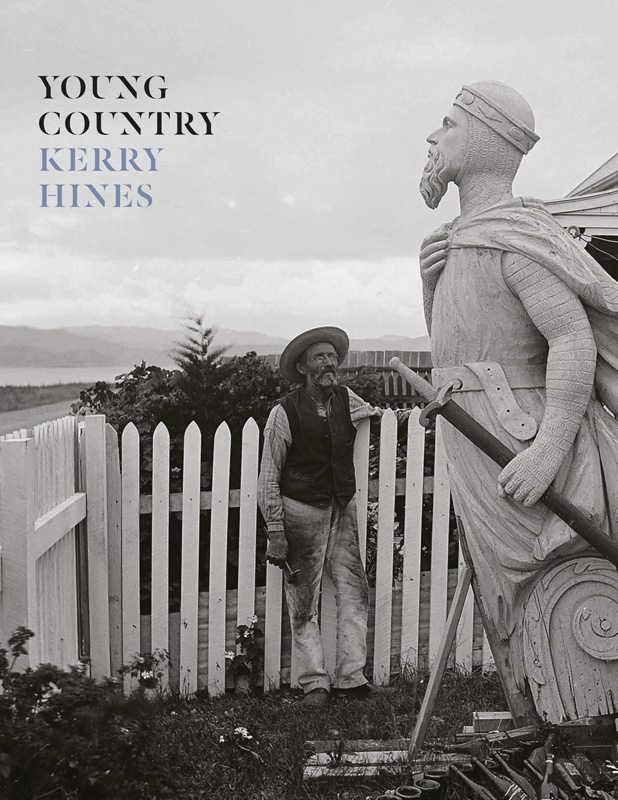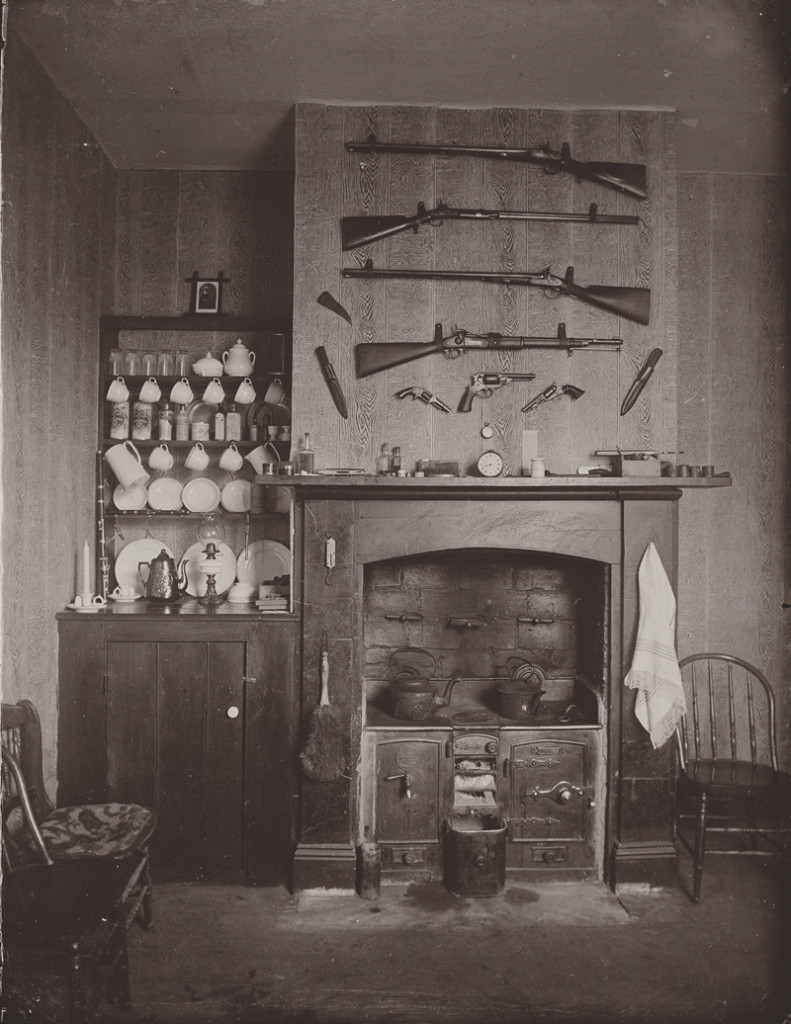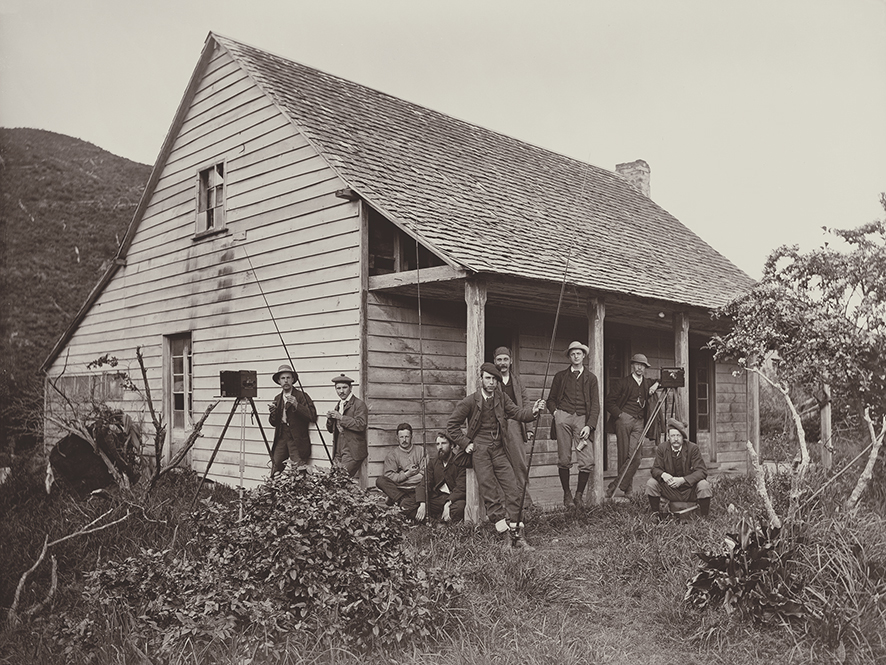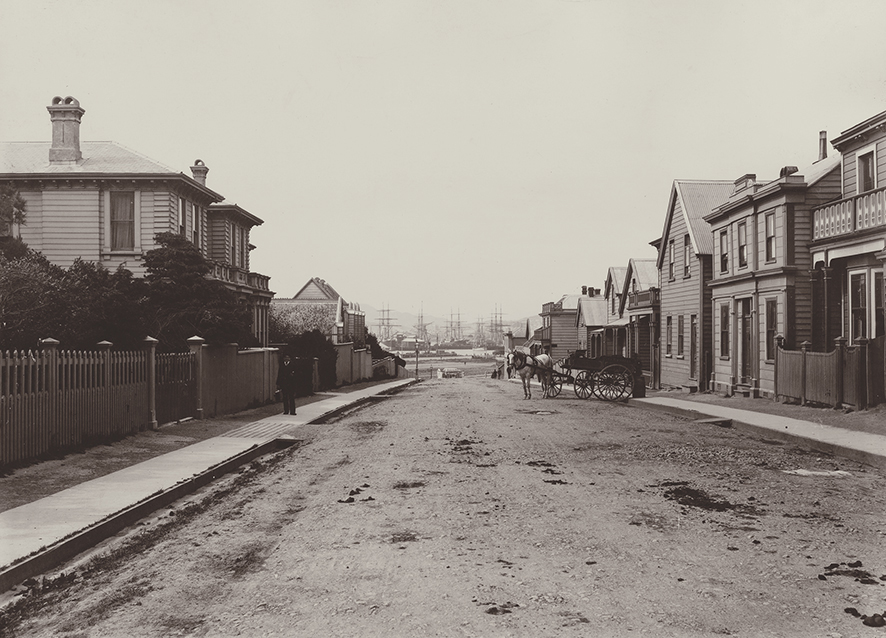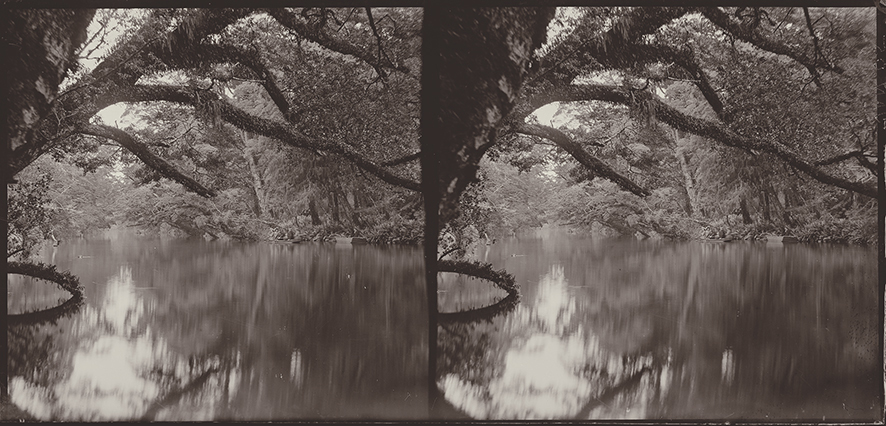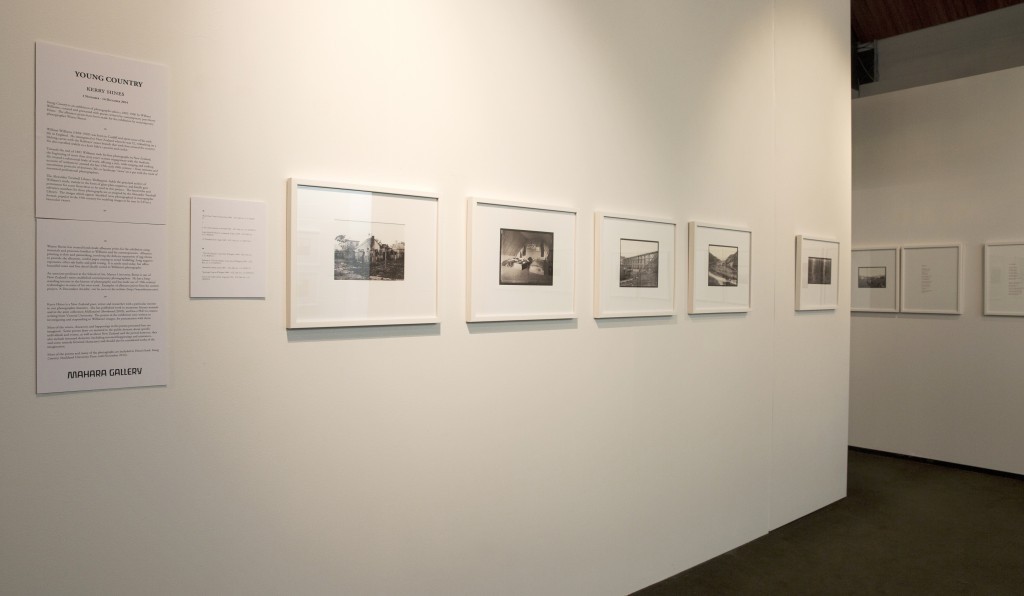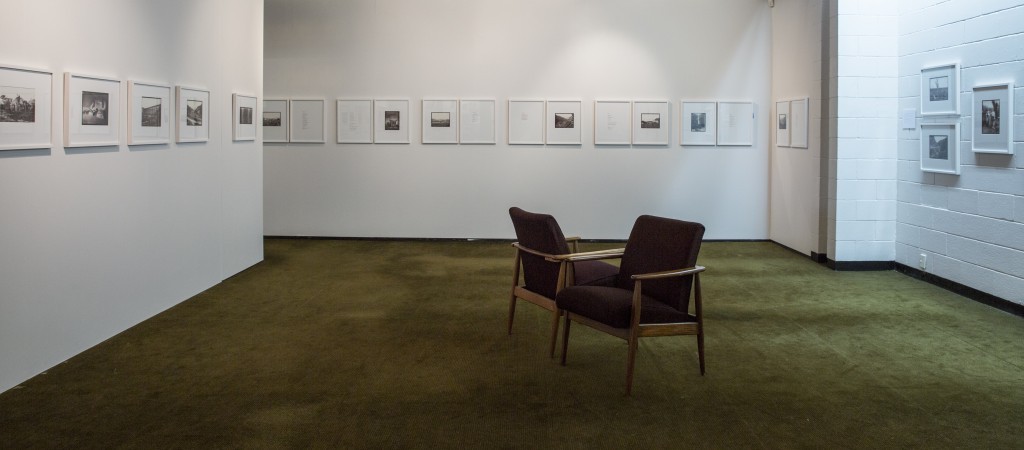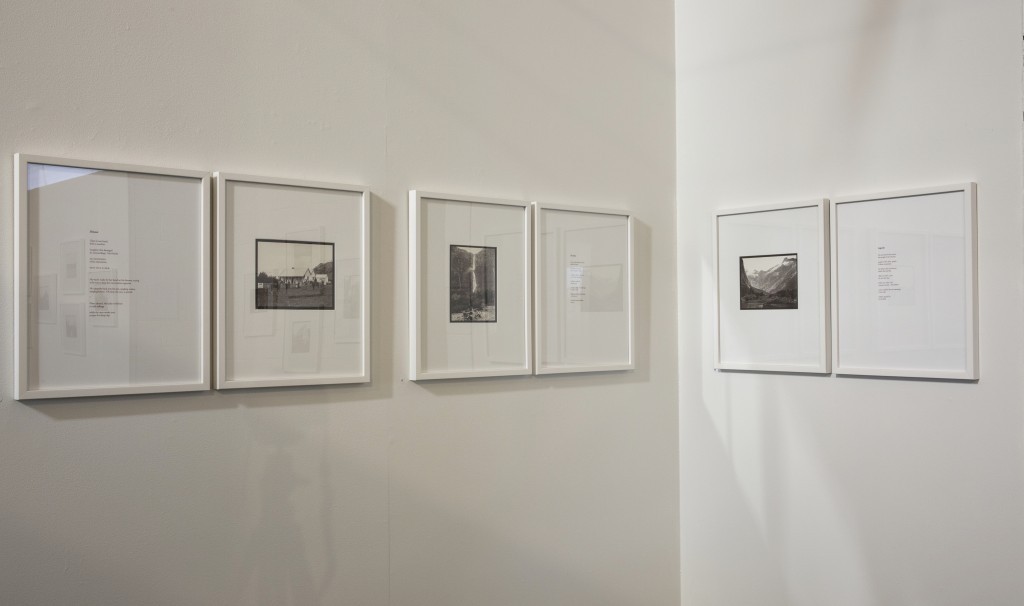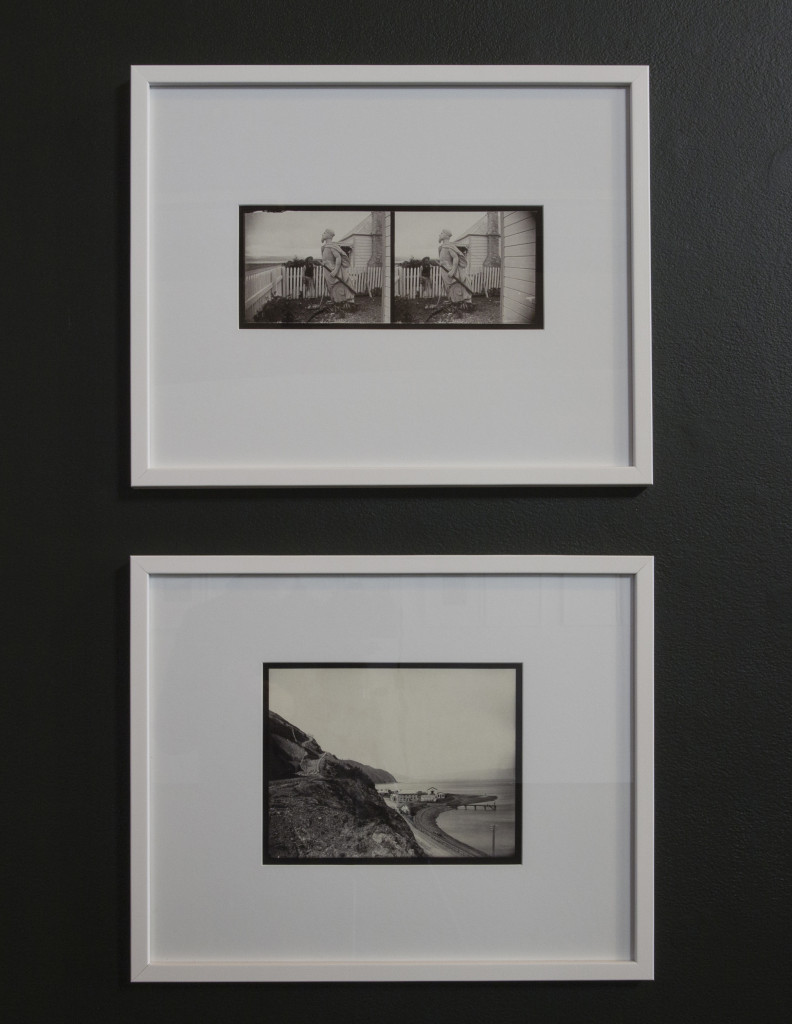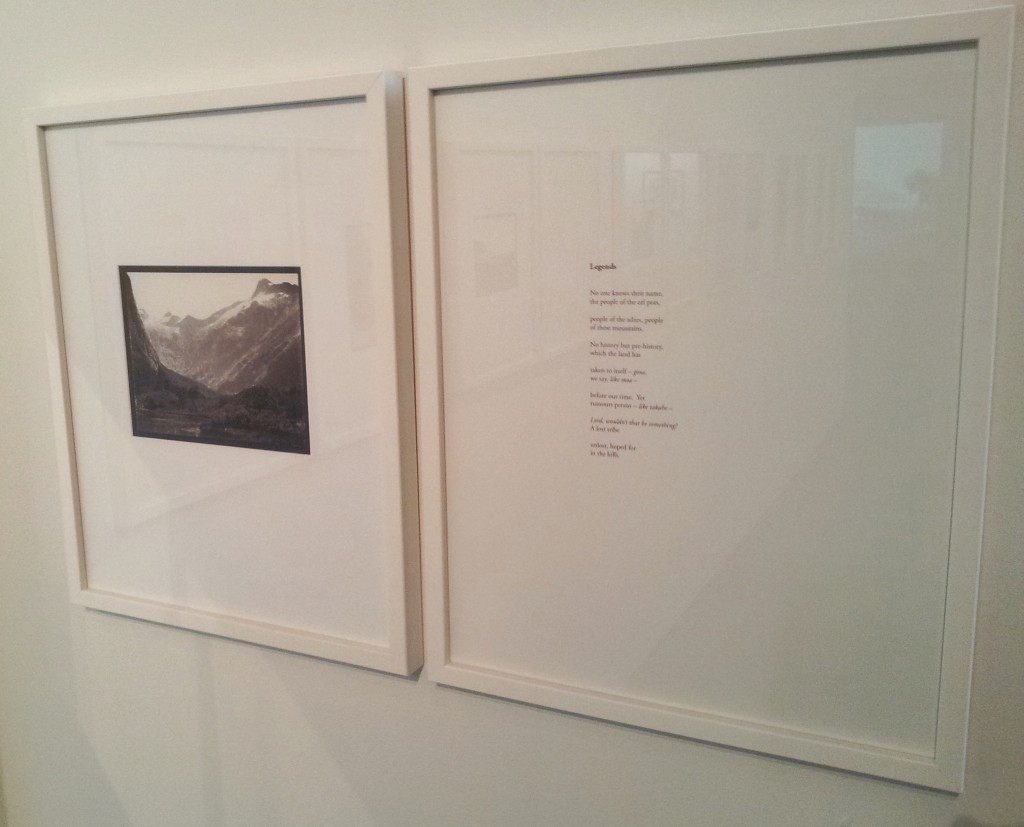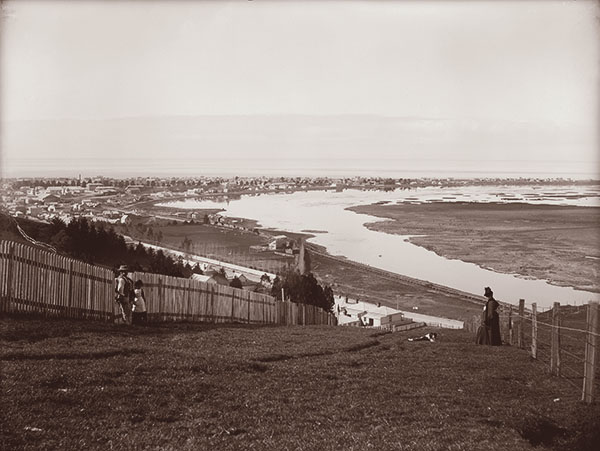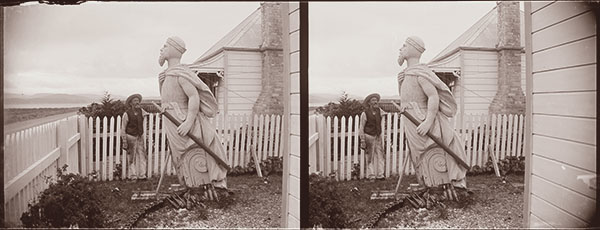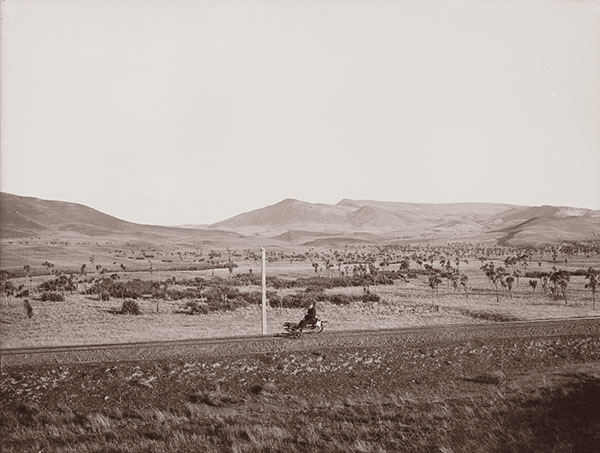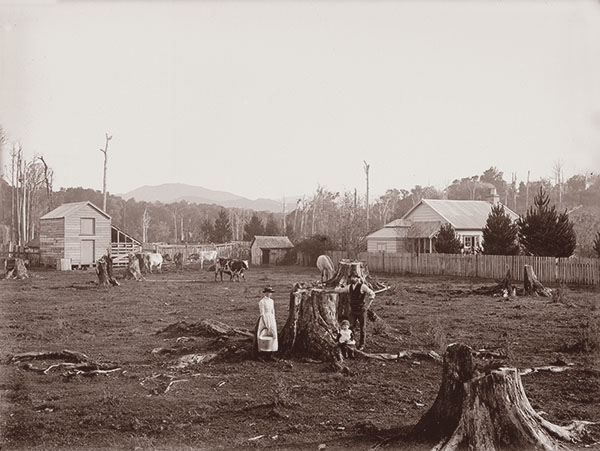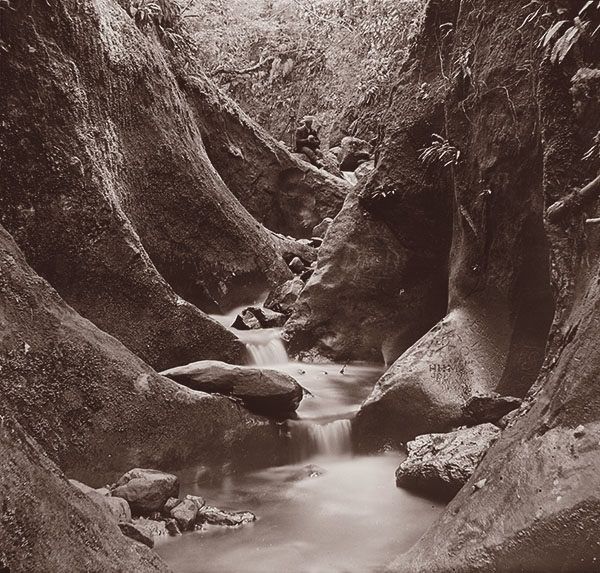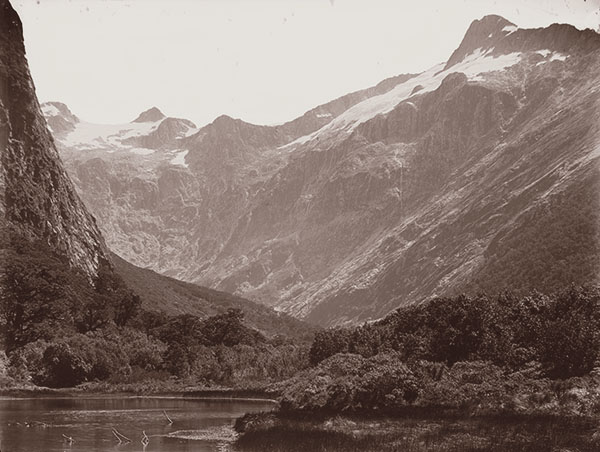YOUNG COUNTRY
Young Country is a fresh and engaging exhibition that brings together nineteenth-century photography and contemporary poetry to offer a new and often surprising view of New Zealand’s past.
The images are the work of William Williams, a Railways employee who worked and photographed widely through the country. His outstanding photographs reflect the rawness of New Zealand’s changing landscape as well as its beauty, and offer intriguing and unusual portraits of family and friends at work, home and play. Their rich detail, striking composition and absorbing content come as a revelation to many viewers. This is work that encourages contemplation, and rewards getting up close, looking and re-looking.
Kerry Hines has researched Williams’s work and context and written poems to accompany a selection of his photographs. Some are presented here as text accompanying photographs on the wall, while others can be heard while viewing images in the DVD work that forms part of the exhibition. The poems are colloquial, vivid and accessible, and include imagined elements as well as drawing on the subjects and contexts of the photographs. Together, poems and photographs combine to create a work that is multi-faceted, immersive, and speculative, inviting reflection on how we envision our history.
Wayne Barrar – Hand-made albumen prints
Uniquely the exhibition features albumen prints made from Williams’s negatives by contemporary photographer Wayne Barrar. Most of Williams’s archive at the Alexander Turnbull Library is in the form of glass plate negatives and lantern slides, and scans of these would typically be used to make digital prints for exhibition. The hand-made albumen prints produced here, using nineteenth-century processes, not only yield beautiful tones and details (ideally suited to Williams’s work) but provide a similar material and visual feel to the prints Williams and his peers would have produced.
Albumen prints are rarely made today since the process is extremely complex, painstaking and time-consuming – including careful separation of egg whites for the albumen base, precise hand-coating of the paper to avoid bubbling, long exposures in UV light, and gold toning. On a few occasions albumen exhibition prints have been made overseas using ‘historic’ negatives, but it appears that Young Country may be the first time this has been done in New Zealand.
William Williams, though not yet widely known, is an outstanding photographer and his are some of the strongest and most informative images of colonial New Zealand I have seen. It’s rare to see such intimate images of domestic life in the period either side of 1900, not to mention clear, well-composed and forceful images of towns, harbours, trains, buildings (both Maori and Pakeha), interiors, landscape features, bush scenes, farms and the like, all beautifully rendered in historically appropriate albumen prints by Wayne Barrar.
Kerry Hines’ poems offer vividly various pictures of colonial New Zealand, both in its ‘male only’ and more domestic aspects. The poems are often dramatic in form and, though often fictional in character, draw imaginatively on the language world of colonial institutions such as courts and newspapers. The relation of poems to photographs is subtle and various – sometimes direct, sometimes oblique – and collectively they constitute a verbally adroit parallel universe to Williams’ images.
Peter Simpson – editor, curator and writer about NZ art and literature.
Audiences
Young Country offers something fresh and unique in its combination of poems, historical images and contemporary albumen prints. While it will particularly appeal to lovers of photography, poetry and history (and offer an opportunity to draw in local communities of interest including creative writers, camera clubs, historical societies and genealogists), it will also engage a wider audience that enjoys work that is contemplative, rich in content, thought-provoking (and shot through with occasional humour).
The exhibition might also be integrated into school programmes for senior students, with potential to link to the senior secondary curriculum in subjects such as English, visual arts, art history and history.
Supporting material
Publication
The exhibition is accompanied by a 193 page hard-cover book, also titled Young Country, published by Auckland University Press in November 2014 (RRP $35). Book and show include substantially overlapping content, but each contains work that is not included in the other.
Audio Visual
DVD audio-visual presentation of poems and photographs for projection or monitor display.
Voice over / readings by Kerry Hines. (running time approx. 20 minutes).
Public Programmes
Depending on the presenters’ availability, there is potential for public programme events in association with the exhibition (such as a floor talk and/or poetry reading at the venue by Kerry Hines, and a talk on the albumen printing process and nineteenth-century photography by Wayne Barrar).
Background on the artists
The Photographer
- William Williams was active as a photographer in New Zealand from 1881 until the 1940s. An employee of the Railways department, he moved around the country in connection with his employment, as well as travelling widely in association with his interests in tramping and canoeing.
- He produced a substantial and engaging body of photographs, including landscapes, urban scenes, and portraits of family and friends, and his work was well regarded by his contemporaries.
- The principal archive of his work is held by the Alexander Turnbull Library, where it is highly rated for its quality and its scope.
- Some of his images have been reproduced in contemporary settings including books, TV and film histories and museum displays, but have rarely been credited to him (as is often the case with reproductions of ‘historical’ photographs). Consequently, while his photography is not entirely unknown, Williams himself is not well known.
The Poet
- Kerry Hines is a New Zealand poet, writer and researcher whose work has been published in books and literary journals here and overseas. She has given readings and presentations on her work in the UK, Australia, Iceland and NZ (including at the National Library Gallery; Mahara Gallery, Waikanae; City Gallery, Wellington; Sarjeant Gallery, Whanganui; and Straumur International Arts Centre, Iceland).
- Young Country draws on her PhD in creative writing (Victoria University, 2012), as does her essay “William Williams and ‘The Old Shebang’”, in Early New Zealand Photography: Images and Essays, ed. Angela Wanhalla and Erika Wolf, University of Otago Press, 2011.
The ‘Printer’
- Wayne Barrar is an internationally recognised photographer with an extensive record of exhibition and publication in photography. He has a long-standing interest in the history of photography, and has worked with processes such as albumen printing, including the production of albumen prints from digital negatives, in his own practice.
- Wayne is Associate Professor (Photography) at the School of Art, Massey University Wellington.
Further responses to Young Country
The exhibition was shown at Mahara Gallery in November-December 2014.
Arts Commentator Mark Amery described Young Country on Nine to Noon as ‘incredibly rich, creative, immediate’ and as offering an unexpected view of New Zealand (in terms of both its landscape and social life).
In discussing the book on Saturday Morning, Greg O’Brien and Kim Hill referred to it as ‘extraordinary’, ‘a magnificent thing’, ‘very funny’, ’very insightful’ and ‘utterly fascinating’. O’Brien noted too that students of New Zealand history and photography would be ‘pretty amazed’ by Williams’s ‘remarkable images’.

